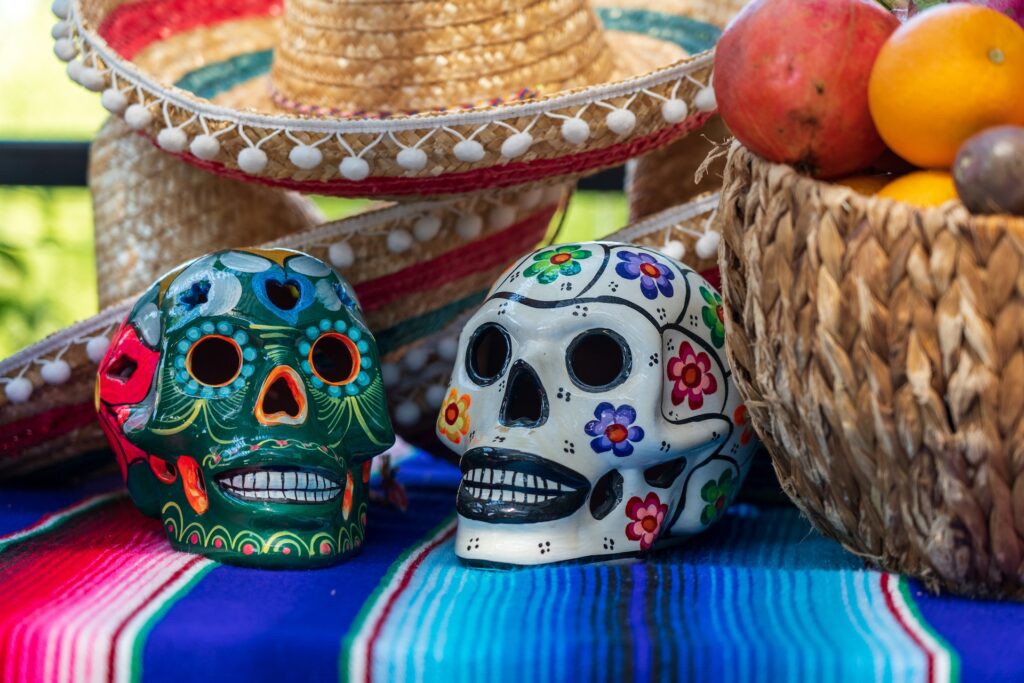Day of The Dead – What is it all about?
The Day of the Dead, or Día de los Muertos, is a vibrant and elaborate celebration that primarily takes place in Mexico and certain other Latin American countries. Although it may seem morbid to an outsider, the holiday is actually a joyous occasion dedicated to honoring and remembering deceased loved ones. The festivities typically begin on October 31st and extend until November 2nd, coinciding with the Catholic All Saints’ Day and All Souls’ Day. This rich tradition is deeply rooted in the indigenous cultures of Mesoamerica and has been recognized by UNESCO as an Intangible Cultural Heritage of Humanity.
During the Day of the Dead, it is believed that the spirits of the departed return to the earthly realm to reunite with their families and partake in the festivities. To welcome and guide the souls, families create elaborate altars, known as ofrendas, in their homes or at grave sites. These altars are adorned with marigolds, candles, incense, religious icons, and the favorite foods and beverages of the deceased. It is believed that these offerings play a vital role in nourishing and satisfying the souls during their visit.
The Day of the Dead is not a somber occasion but rather a vibrant celebration full of color, music, and laughter. Families gather in cemeteries to clean and decorate the graves of their loved ones. They bring flowers, particularly marigolds, which are considered to have powerful scent and color to attract and guide the souls. In addition to flowers, families also decorate graves with colorful papel picado (perforated paper), photographs of the deceased, and their favorite belongings. It is believed that by creating this inviting and cheerful environment, the spirits will feel loved and encouraged to spend time with their families.
Another iconic element of the Day of the Dead is the use of calacas and calaveras, which are representations of skulls and skeletons. These figures, often made from sugar or clay, symbolize the cycle of life and death and are seen as a playful and affectionate way to depict the deceased. People paint their faces as skulls, wear skeleton costumes, and even create humorous poems, known as calaveras literarias, that mock death and the living. This lighthearted portrayal helps people overcome their fear of death and embrace it as a natural part of the human experience.
Food also plays a central role in the Day of the Dead celebrations. Families prepare traditional dishes such as pan de muerto (sweet bread) and sugar skulls, which serve as both decorations and gifts for the spirits. Pan de muerto is a soft and sweet bread shaped like bones, with sugar toppings representing tears or skulls. These treats are left as offerings on the altars or placed on graves as a way to nourish the spirits during their visit. Families also prepare the favorite foods and drinks of their departed loved ones, ensuring that their souls can enjoy a delicious feast.

The Day of the Dead is a culturally significant celebration that showcases the profound respect and love Latin American communities have for their deceased relatives. It provides a space for families to honor their ancestors, celebrate their lives, and maintain a connection with them beyond death. The colorful aesthetics, joyful music, and delicious food create an atmosphere of love and remembrance. By participating in this unique and meaningful tradition, people not only honor their past but also reaffirm the interconnectedness of life and death.
Overall, the Day of the Dead is a captivating and profound annual celebration that allows families to remember and cherish their departed loved ones. Through vibrant altars, colorful decorations, and lively festivities, this cultural tradition provides a beautiful way to celebrate life and death while maintaining a strong connection with one’s heritage.